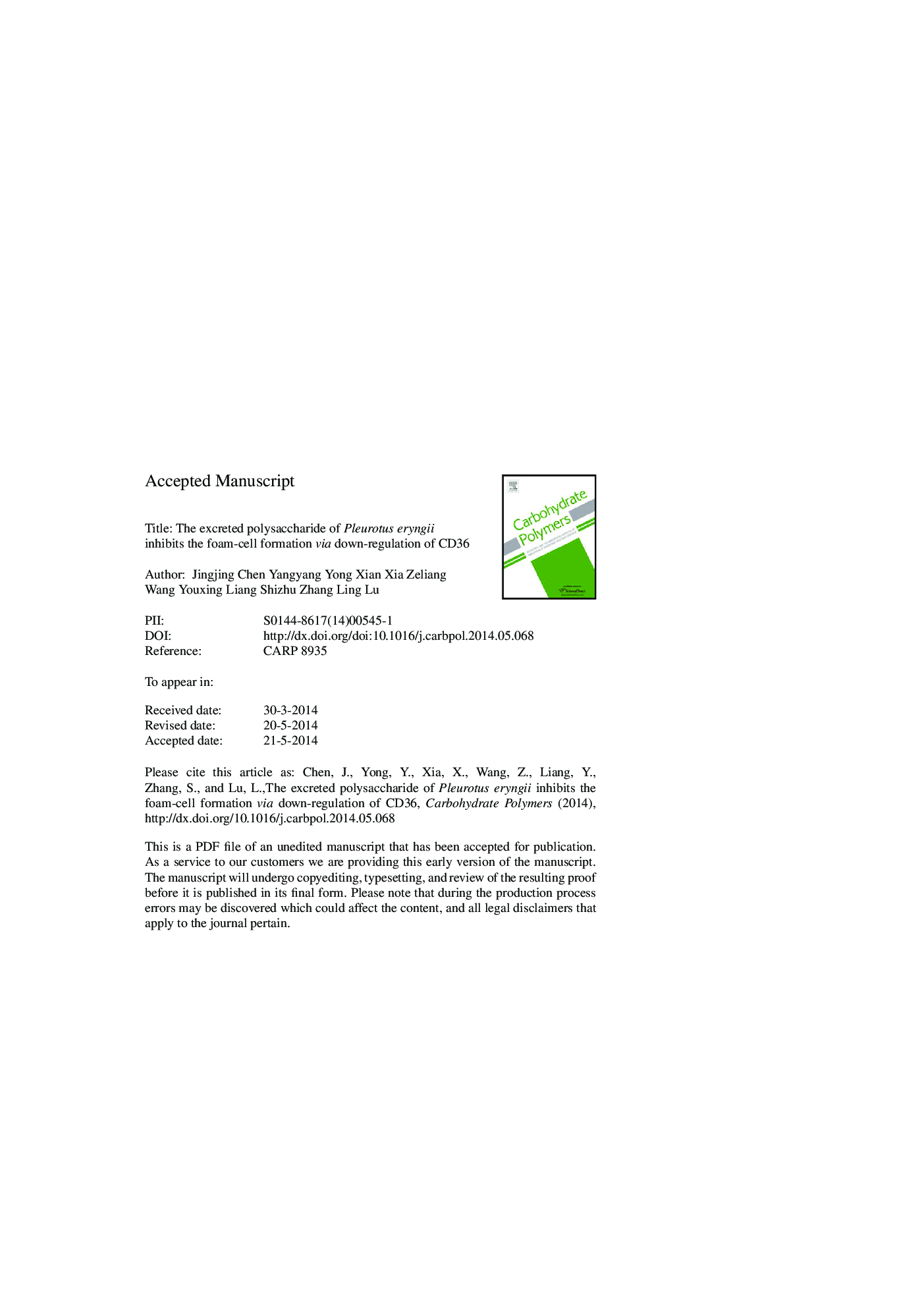| Article ID | Journal | Published Year | Pages | File Type |
|---|---|---|---|---|
| 7790957 | Carbohydrate Polymers | 2014 | 32 Pages |
Abstract
Previous study has verified the polysaccharide from the fruiting body of Pleurotus eryngii (PEPE) is capable of decreasing the lipid content in both of cell-line and mouse model. However, little is known about underlying mechanisms and whether this bioactive polysaccharide exists in submerged culture. Here, we verified the excreted polysaccharides EP and EP-1 from submersion culture of P. eryngii have the remarkable inhibitory effects on lipid accumulation in macrophage-derived foam cells. Structure analysis indicates EP-1 consists of d-types of glucose, galactose and mannose with the main β(1 â 3)-glucan glycosidic linkage branched at O-6 by α-d-glucose while EP digested by β-1,3-glucanase fails to decrease the lipid accumulation, suggesting that the special structure is essential for its function. Expression analysis suggests that EP is able to cause the down-regulation of the scavenger receptor-CD36 on both transcription and protein levels. Most importantly, EP can be obtained by fermentation in a mass-production.
Related Topics
Physical Sciences and Engineering
Chemistry
Organic Chemistry
Authors
Jingjing Chen, Yangyang Yong, Xian Xia, Zeliang Wang, Youxing Liang, Shizhu Zhang, Ling Lu,
